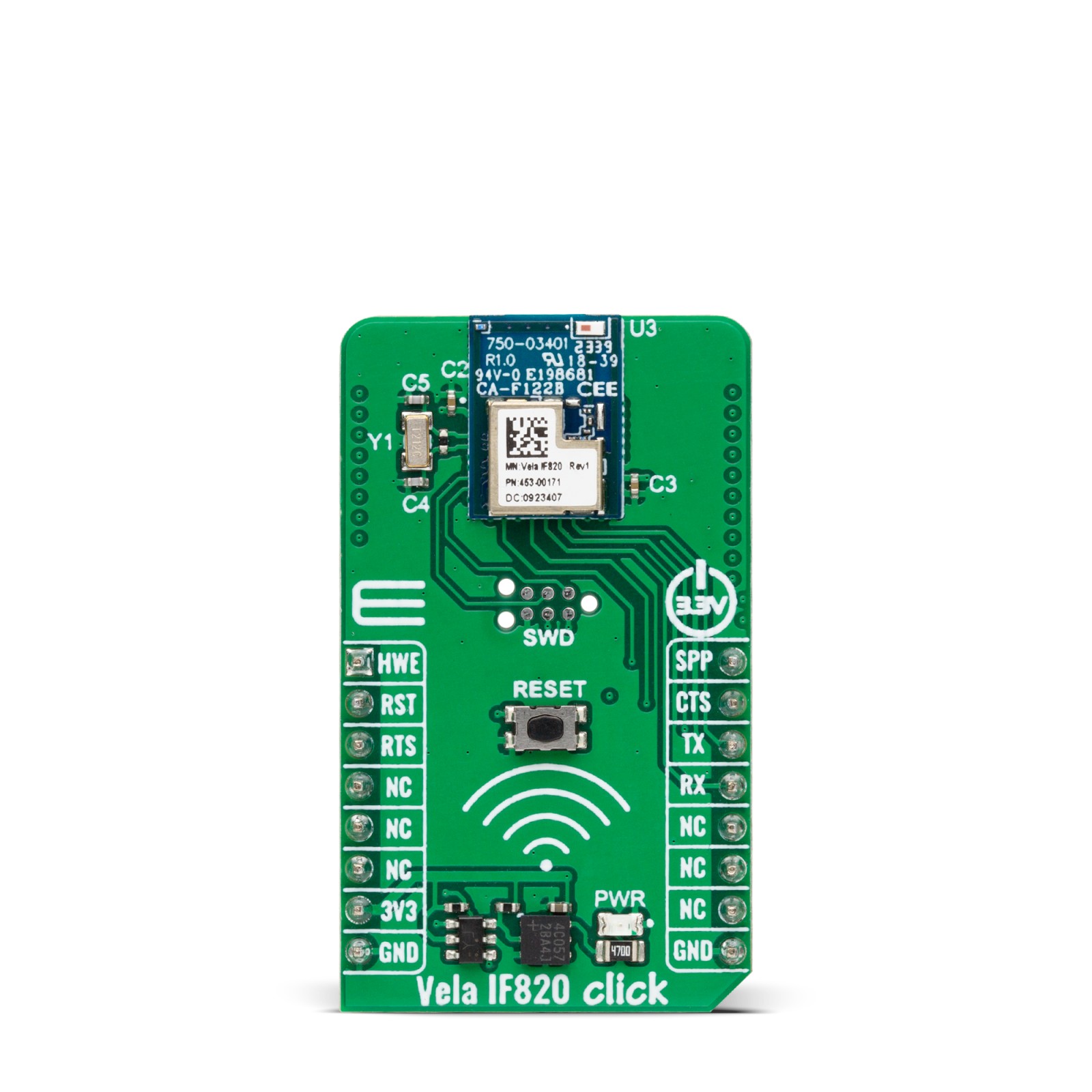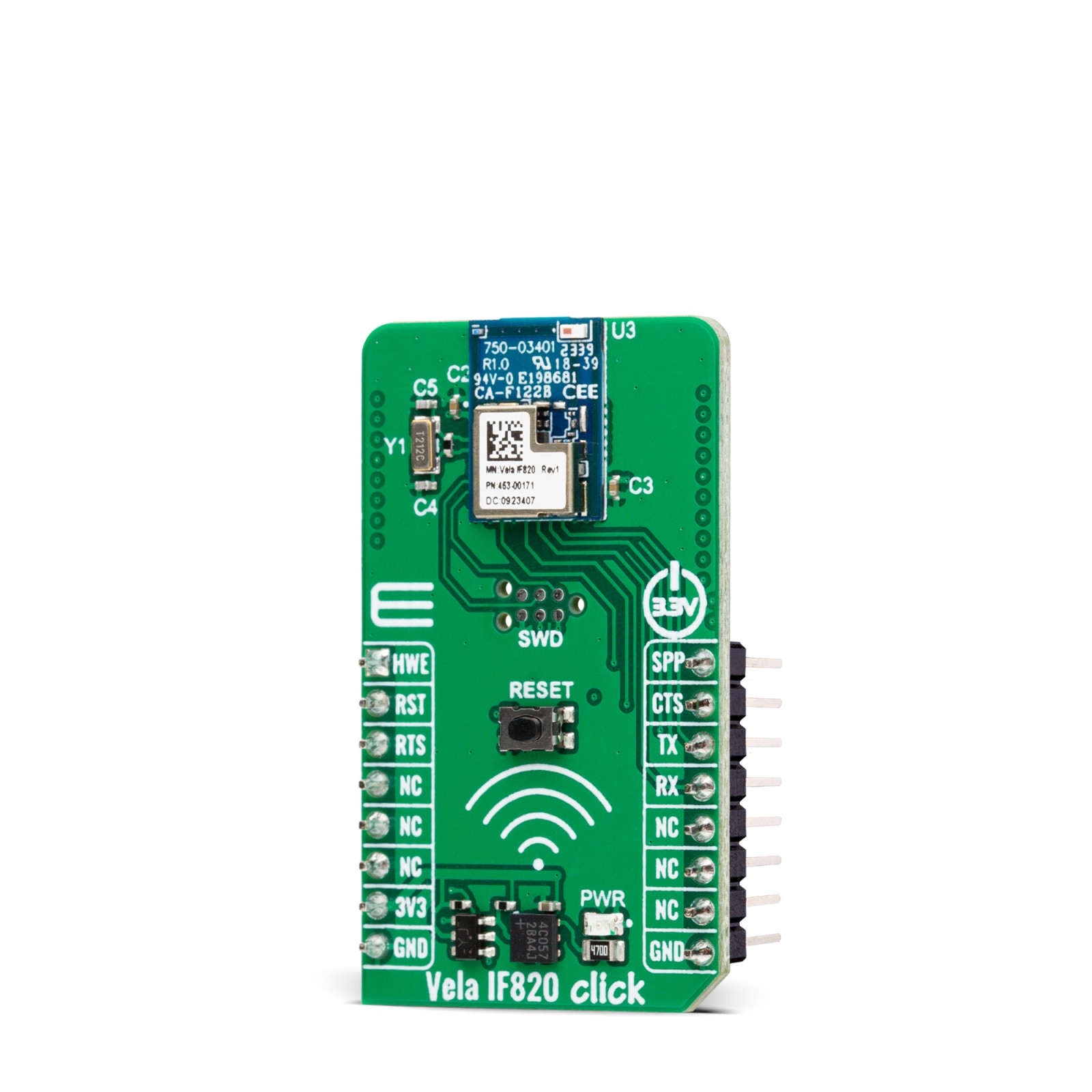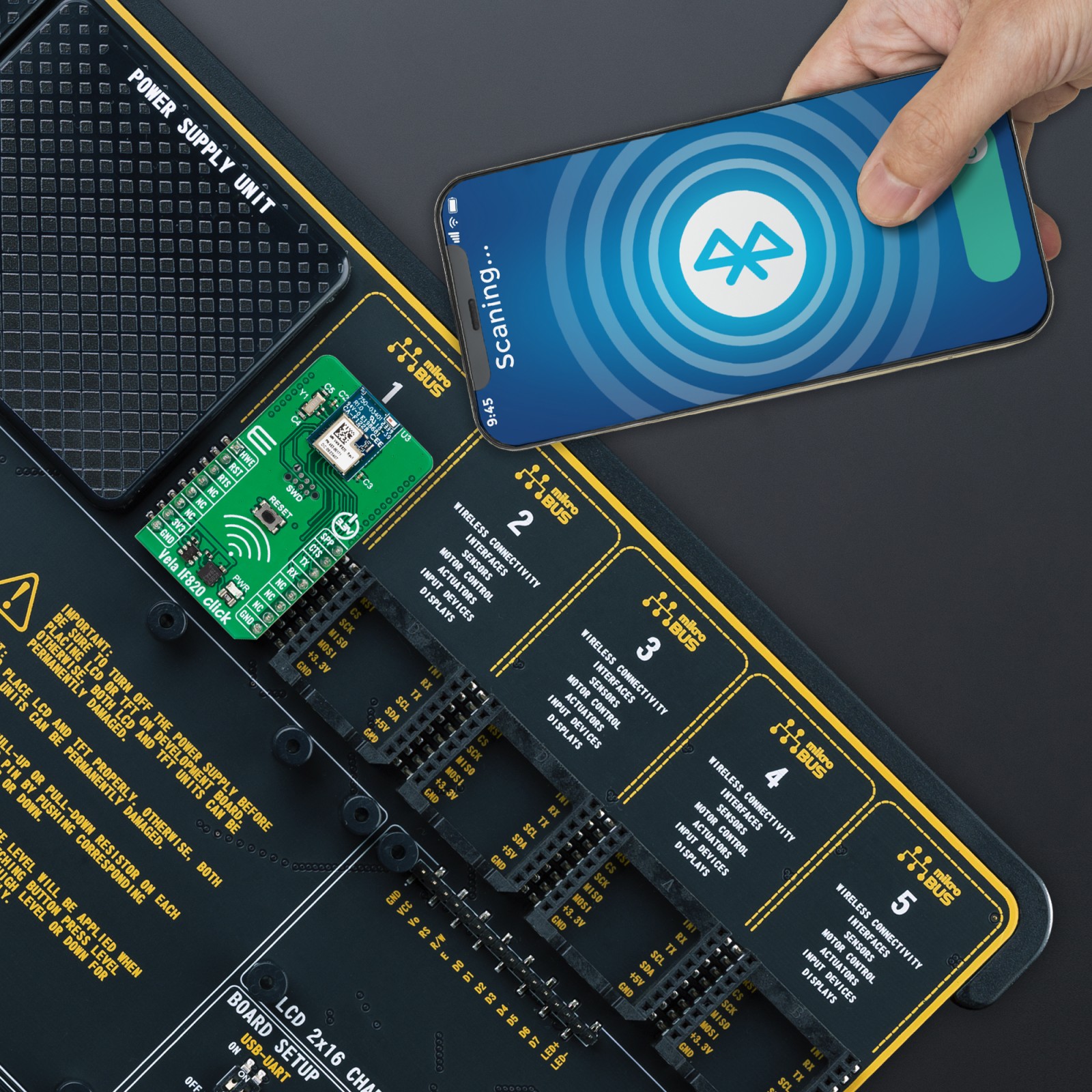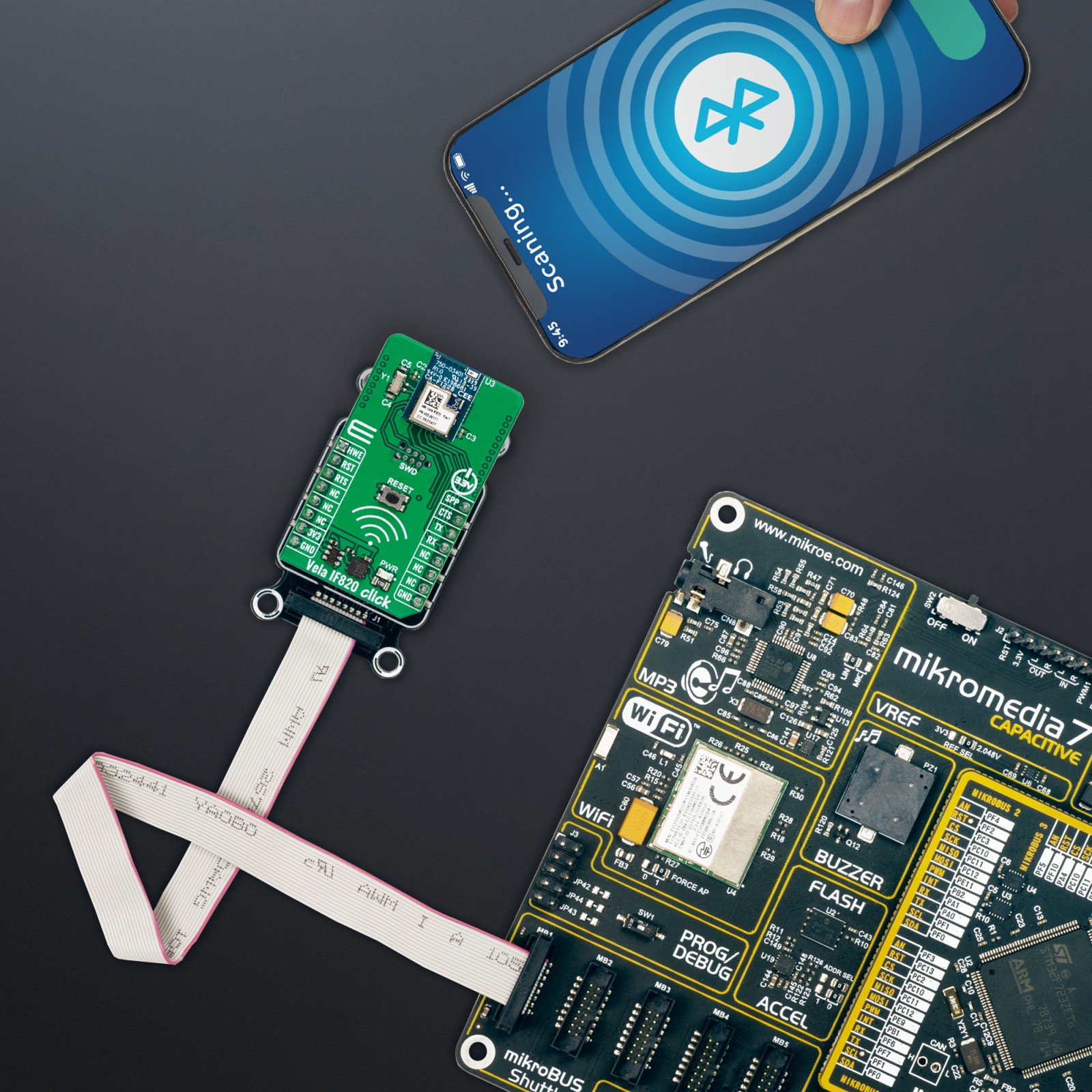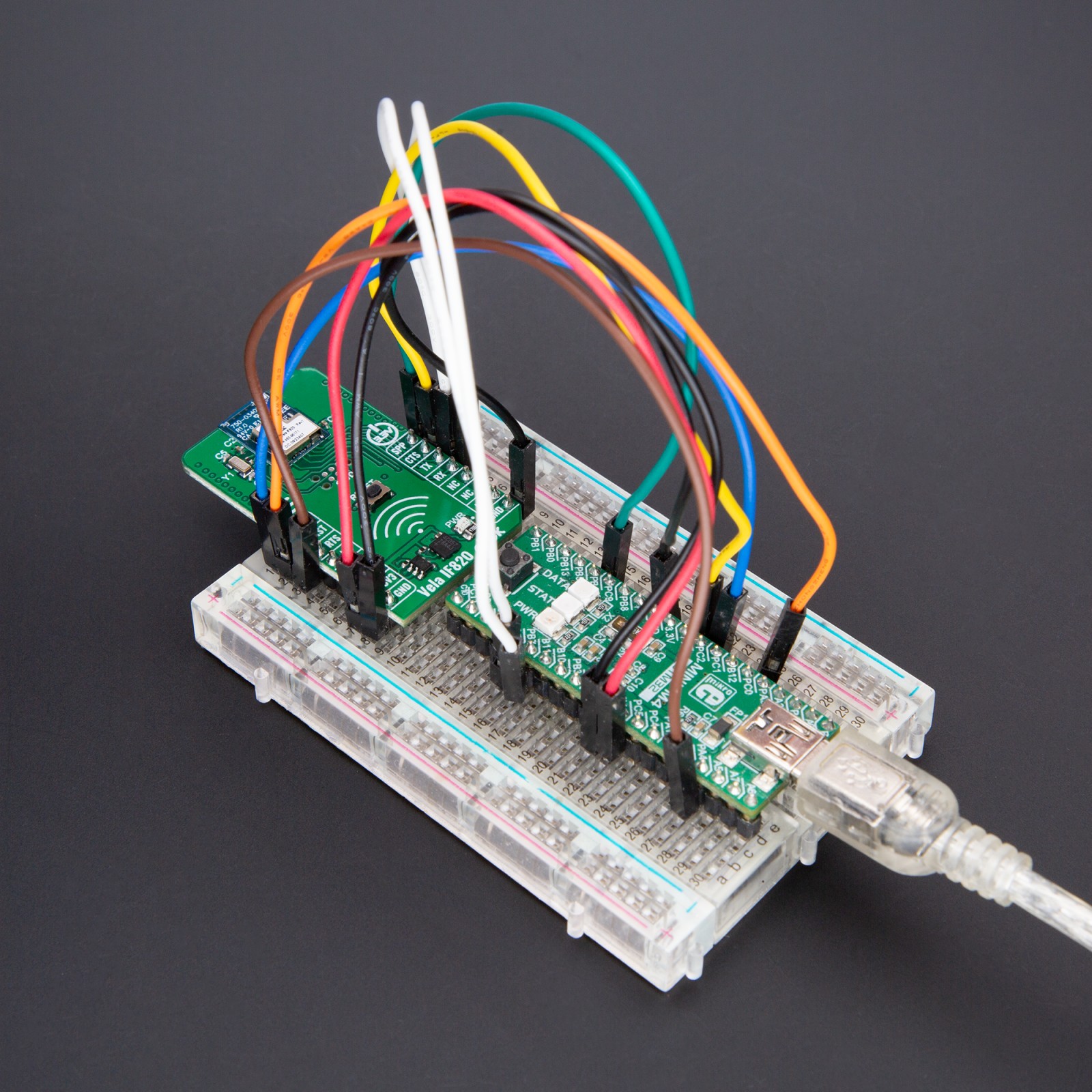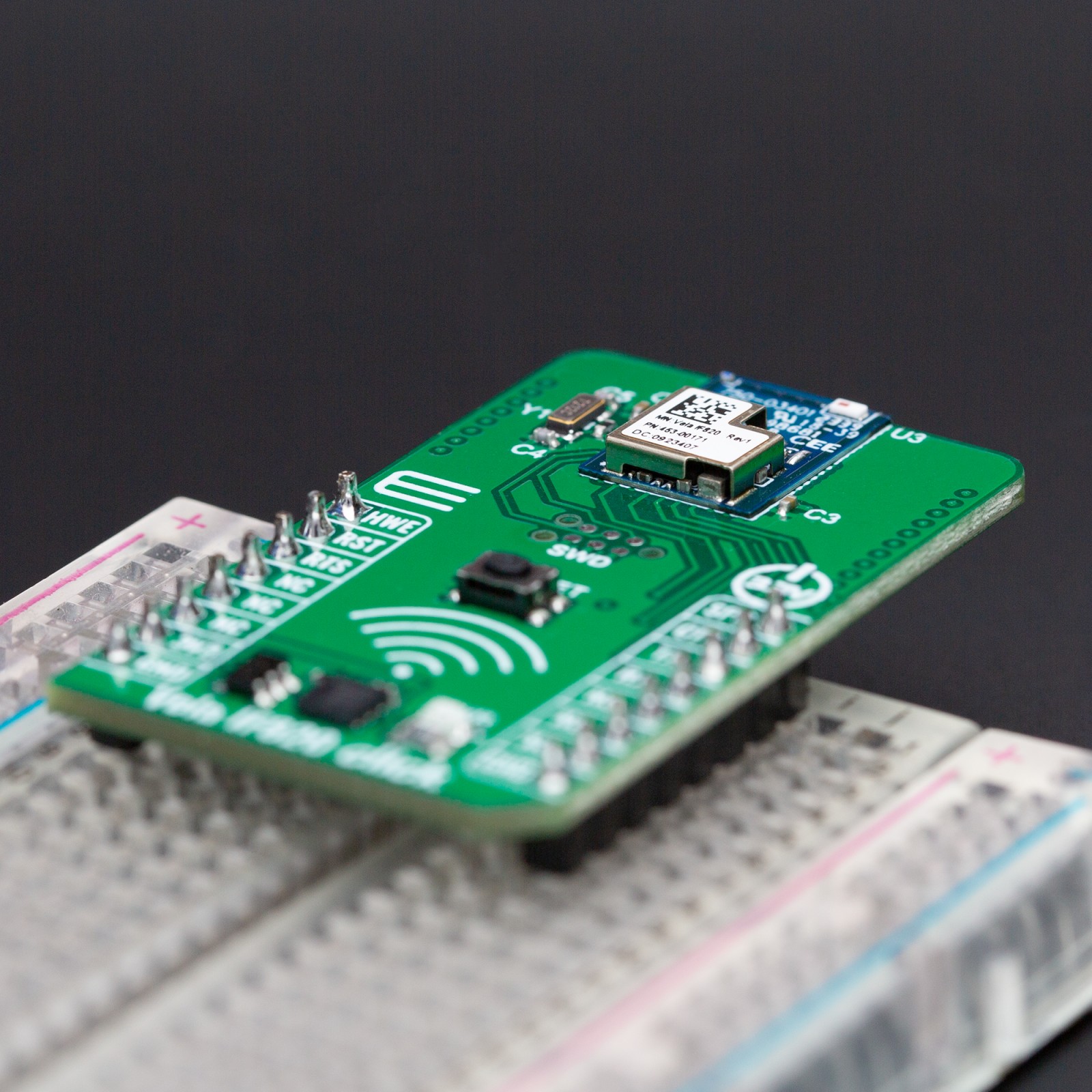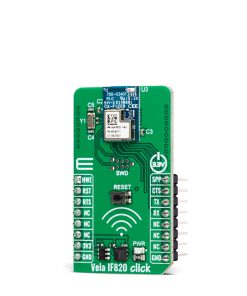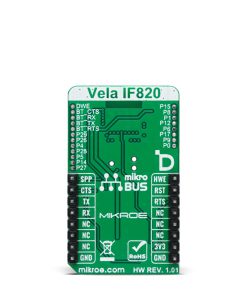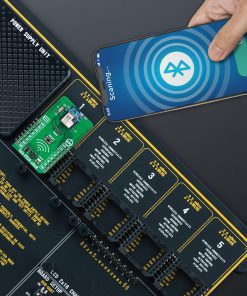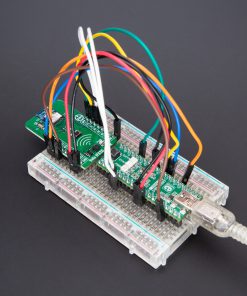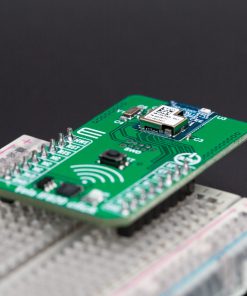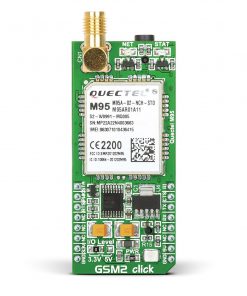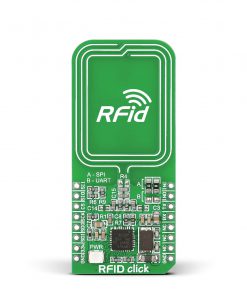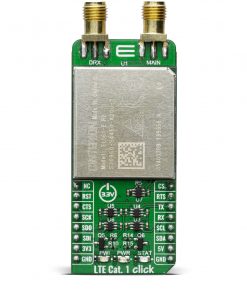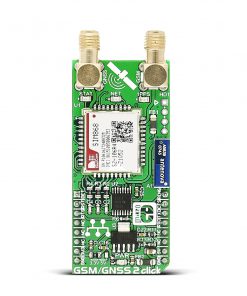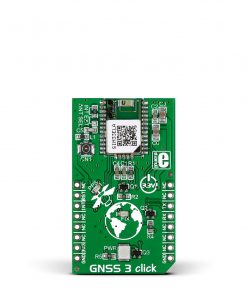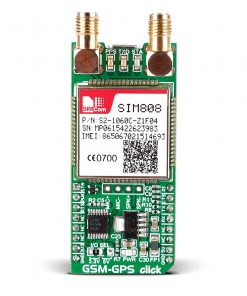Vela IF820 Click is a compact add-on board for Bluetooth® wireless communication in various embedded applications. This board features the Vela IF820 (453-00171R), a dual-mode Bluetooth module with an integrated antenna from Ezurio, powered by the Infineon AIROC™ CYW20820 chipset with a high-performance Arm® Cortex®-M4 processor. Supporting Bluetooth® 5.4 with dual-mode (Classic & LE), it offers robust connectivity with BR/EDR and LE 1M/2M PHY, up to 10dBm EIRP output power, and excellent receiver sensitivity. The board communicates via UART with hardware flow control, includes power management features, and supports firmware debugging through SWD. Ideal for industrial automation, IoT devices, wireless sensor networks, medical monitoring, and smart home systems, it ensures reliable and high-performance Bluetooth communication.
Vela IF820 Click is fully compatible with the mikroBUS™ socket and can be used on any host system supporting the mikroBUS™ standard. It comes with the mikroSDK open-source libraries, offering unparalleled flexibility for evaluation and customization. What sets this Click board™ apart is the groundbreaking ClickID feature, enabling your host system to seamlessly and automatically detect and identify this add-on board.
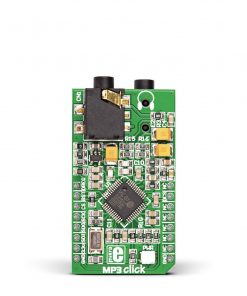 MP3 Click
1 × R490.00
MP3 Click
1 × R490.00 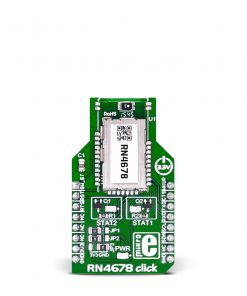 RN4678 Click
1 × R870.00
RN4678 Click
1 × R870.00 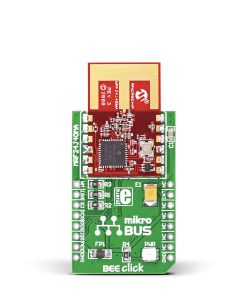 BEE Click
1 × R810.00
BEE Click
1 × R810.00 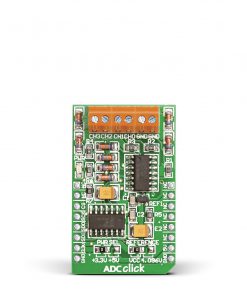 ADC Click
1 × R545.00
ADC Click
1 × R545.00 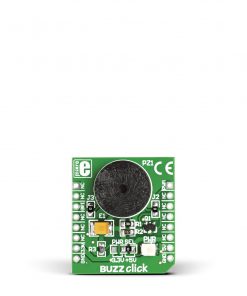 BUZZ Click
1 × R120.00
BUZZ Click
1 × R120.00 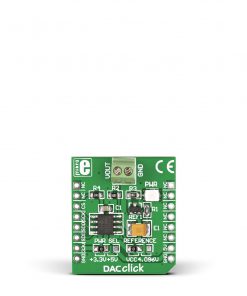 DAC Click
1 × R415.00
DAC Click
1 × R415.00 
